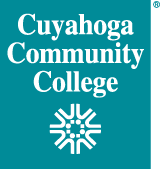At many institutions, the gateway courses where an adaptive learning project can have the biggest impact on closing equity gaps are often disproportionately taught by adjunct faculty. Therefore, says Ruanda Garth-McCullough, Ph.D., Associate Director of Teaching and Learning at Achieving the Dream, “When you’re talking about a full course rollout, you can’t do that without adjunct faculty.”
When Garth-McCullough and her colleagues visit community colleges to help establish an adaptive learning project, they always ask for adjunct faculty members to be part of the cross-functional team. However, many colleges struggle with finding ways to bring adjunct faculty into the process. Because adjunct faculty often have irregular availability, they may not be available for the same training sessions provided to full-time faculty.
But institutions benefit when they find ways to involve adjunct faculty in the implementation of a digital learning initiative. One example is from Cuyahoga Community College (also known as Tri-C), where Professor of Business Administration Michele Hampton redesigned the college’s Intro to Business class to incorporate adaptive courseware as part of a pilot project with Every Learner Everywhere.
Among the instructors of that course were eight contingent faculty across Tri-C’s two campuses. Hampton was committed to including them in the design and implementation process, creating a course that improved student success. Here is how she did it.
Read more — The Faculty Learning Community In Action: A Profile of Cuyahoga Community College
Getting adjunct faculty up to speed and providing support
When it came to implementing adaptive courseware in the Intro to Business class, Hampton realized she would need to work more closely than usual with adjunct faculty to make sure they understood how to use the new technology, what had been changed in the course, and what the goals of the adaptive learning project were.
First, Hampton led a workshop with faculty who would be teaching Intro to Business. During the workshop, Hampton walked them through how to use the adaptive courseware, then explained how she designed the course. The workshop gave faculty a chance to offer input, and it offered them financial support through Tri-C’s Adjunct Stipend Program.
After the initial workshop, Hampton established a mentoring relationship with each adjunct instructor. She scheduled one-on-one meetings with them to help them get the courseware set up at the beginning of the semester, then scheduled check-ins at the midway point to ensure everything was on track.
Providing training that works with adjunct schedules
These one-on-one meetings helped ensure adjunct faculty could carve out time in their schedules to learn the new courseware, which can be a challenge for faculty teaching multiple courses, across multiple campuses.
“I’ve been an adjunct faculty member, so I get it,” says Hampton. “You don’t have a lot of time to sit and explore.”
Designing training around adaptive courseware for adjunct faculty is different than for full-time faculty, which is why institutions need to consider the role adjunct faculty will play in the adaptive learning project from the beginning.
“When you only have full-time faculty at the table, that’s going to change the way you structure supports versus if you bring in adjunct faculty,” says Garth-McCullough.
One tactic Garth-McCullough recommends is providing video recordings and training that are accessible and asynchronous, so adjunct faculty can learn around their schedules.
Related reading — Models for Effective Faculty Development While Implementing Adaptive Learning
Incorporating feedback along the way
Because Intro to Business was being redesigned as part of Tri-C’s adaptive learning project, Hampton relied on transparent conversations with adjunct faculty to help her shape it. She had an open-door policy to welcome frank questions and feedback that could help improve the course.
In one instance, adjuncts told her students were becoming confused by a custom part of the courseware meant for homework. Because the content was by a different author from the course itself, the wording and chapter numbers were off.
“I ended up scrapping that whole section and redoing it,” says Hampton. “I really did pay attention to what they told me and changed what wasn’t working.”
At the end of the course, adjunct faculty told her they had appreciated having a full-time faculty member as a resource they felt comfortable contacting with any question, big or small. “Sometimes adjunct faculty can feel like they’re not connected to what’s happening at the college,” she says.
How adjunct faculty improve adaptive learning projects
Fall 2019 was the first time Hampton’s new version of Intro to Business was taught using adaptive courseware. Spring 2020 marked the scale-up effort to expand the reach of the course. In that version, the adaptive courseware wouldn’t let students submit work until they mastered the chapter topics. This provided a stronger foundation for students to succeed in the course.
“The way the class is designed, if you stay on the path you’ll be okay,” says Hampton. “I added more rigor to the class, but I also added more support around the rigor.” In her own section, the lowest earned grade was C except for one student who had stopped participating after week three.
Although the need to move all classes online at the end of the spring 2020 semester due to COVID-19 made it impossible to accurately compare course data from the adaptive learning project with previous years, anecdotally Hampton has heard good feedback about the course from the adjunct faculty who taught it along with her.
“They were eager, and happy to be included,” says Hampton. “They were excited to be considered a valued member of the team.”
Learn more with our Guide For Implementing Adaptive Courseware
Originally published August 2020. Updated August 2021 with additional information and references.




